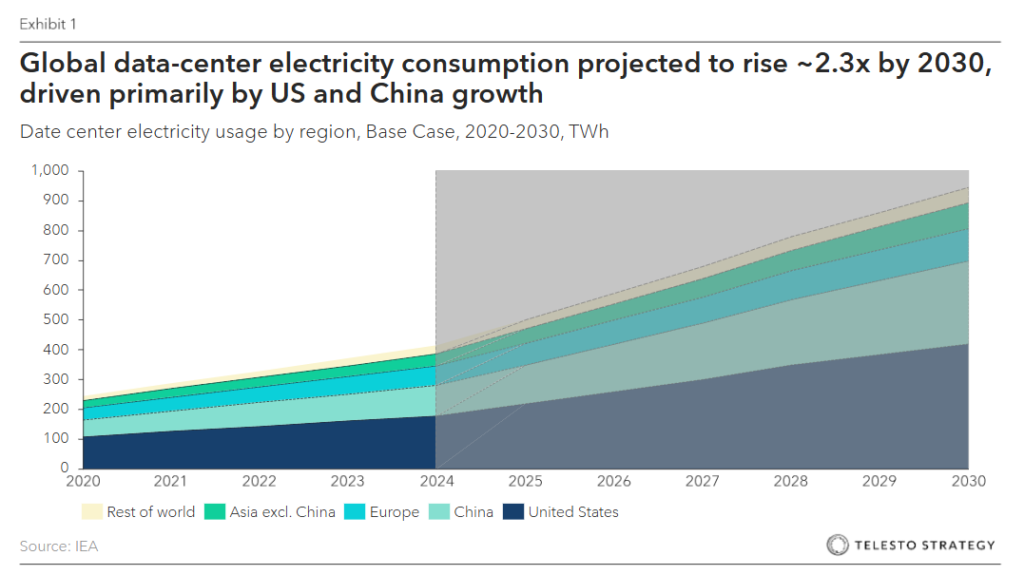
Copyright © 2025 Telesto Strategy, LLC
All rights reserved
AI in real estate: The upside
AI is proving to be a catalyst for energy efficiency, carbon tracking, and asset optimization — especially in older and energy-intensive buildings. Key benefits include:
The implications aren’t just operational; they’re strategic. Companies using AI effectively are seeing reduced operating costs, faster lease-up rates, and smarter capital deployment. Even how building components are being handled at end-of-life is changing. As smart building systems and data management technologies are spreading, building owners and operators are getting far smarter about how to anticipate and plan for cost-saving retrofits through AI-powered tools.
AI’s emerging downsides
For all the momentum, AI’s rise is not without costs. As real estate leaders weigh the value of AI investments, they must also account for potential downsides:

Strategic priorities for real estate leaders
Real estate leaders have a pivotal role to play in navigating the sector’s AI moment — not just in identifying the upside, but in planning for the systemic risks AI introduces. Here’s where to focus:
A few considerations for real estate leaders:
AI is changing the rules—and the risks—for real estate. Telesto Strategy is helping leaders harness AI not just for performance, but for long-term resilience and sustainability. Let’s talk about how you can put it to work across your portfolio.

Partner, Washington DC
With a background spanning both urban planning and private real estate development in the United States and Middle East, Andrew supports real estate investors and other firms with large portfolios of physical assets to create sustainable strategies which integrate resilience and sustainable risk management into their business models and investment processes.

Partner, San Francisco
Ben has led sustainability and growth strategy projects for clients across the real estate ecosystem, including investment firms, construction materials manufacturers, PropTech companies, and more. He supports clients on a number of strategic topics such as setting net zero targets, embedding sustainability and emissions reduction into capital deployment, and capturing sustainable growth opportunities.

Manager, Miami
Diego helps real estate practitioners implement their sustainability strategies including net zero roadmaps, climate risk strategies, building economic models, demonstrating his expertise in renewables and sustainable technologies.

Copyright © 2025 Telesto Strategy, LLC
All rights reserved